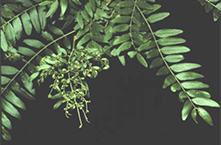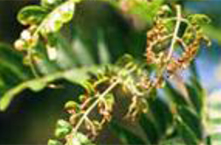Honey Locust
DAMAGE:
Plant bugs and leaf hoppers become active as new leaves begin to develop. Plant bug feeding causes leaf yellowing, stippling, stunting and deforming early in the season. Leaf hoppers cause leaf spotting, stippling and blackening of leaf margins. Shoot dieback may occur. Defoliation may occur on severely infested trees.
DESCRIPTION AND LIFECYCLE:
These two insects are often found at the same time feeding on Honey Locusts but plant injury is due almost entirely to the plant bug. Honey Locust Plant Bugs overwinter under bark as eggs. They hatch and begin feeding as new leaves develop, from late April to mid-May. Nymphs mature into adults in about one month. There is one generation per year.
CONTROL MEASURES:
To monitor for these insects tap a branch over a sheet of paper or tapping tray or use a sweep net. Apply approved insecticides when nymphs are active and numerous. Look for nymphs as Saucer Magnolia and Bridalwreath Spirea are in bloom. Treat the underside of leaves when leafhoppers are active about mid-June. Apply dormant oil in the fall or spring to help reduce populations.



REFERENCES: A Pocket IPM Scouting Guide for Woody Landscape Plants; By Diane Brown-Rytlewski Publication 383; Ministry of Agriculture, Food and Rural Affairs
